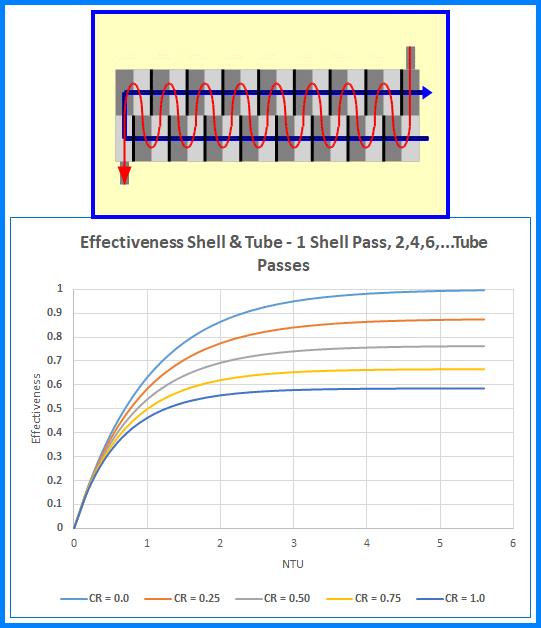This workbook evaluates the effectiveness (ε) as a function of NTU (number of transfer units) for a number of common heat exchanger geometries. These geometries include counter-flow, parallel flow, shell-and-tube w/1 shell, shell-and-tube w/2 shells, crossflow unmixed, crossflow mixed and crossflow with one fluid mixed. The user can use these results to ccompare results from our heat exchanger module.

Note that effectiveness is maximized as the capacity ratio (CR = Cmin/Cmax) approaches 0.0. CR = 0.0 corresponds to a condenser or evaporator and is plotted as the light blue line. That is, the counterflow/parallel flow nature of the shell-and-tube configuration becomes less important.
The analytical solutions tabulated here may be the best way to represent a heat exchanger in an overall system model. They are expressed easily in terms of an algebraic equation. This contrasts with a graphical lookup using the LMTD (log mean temperature difference) approach. The user can copy the VBA functions used herein and use them elsewhere.
